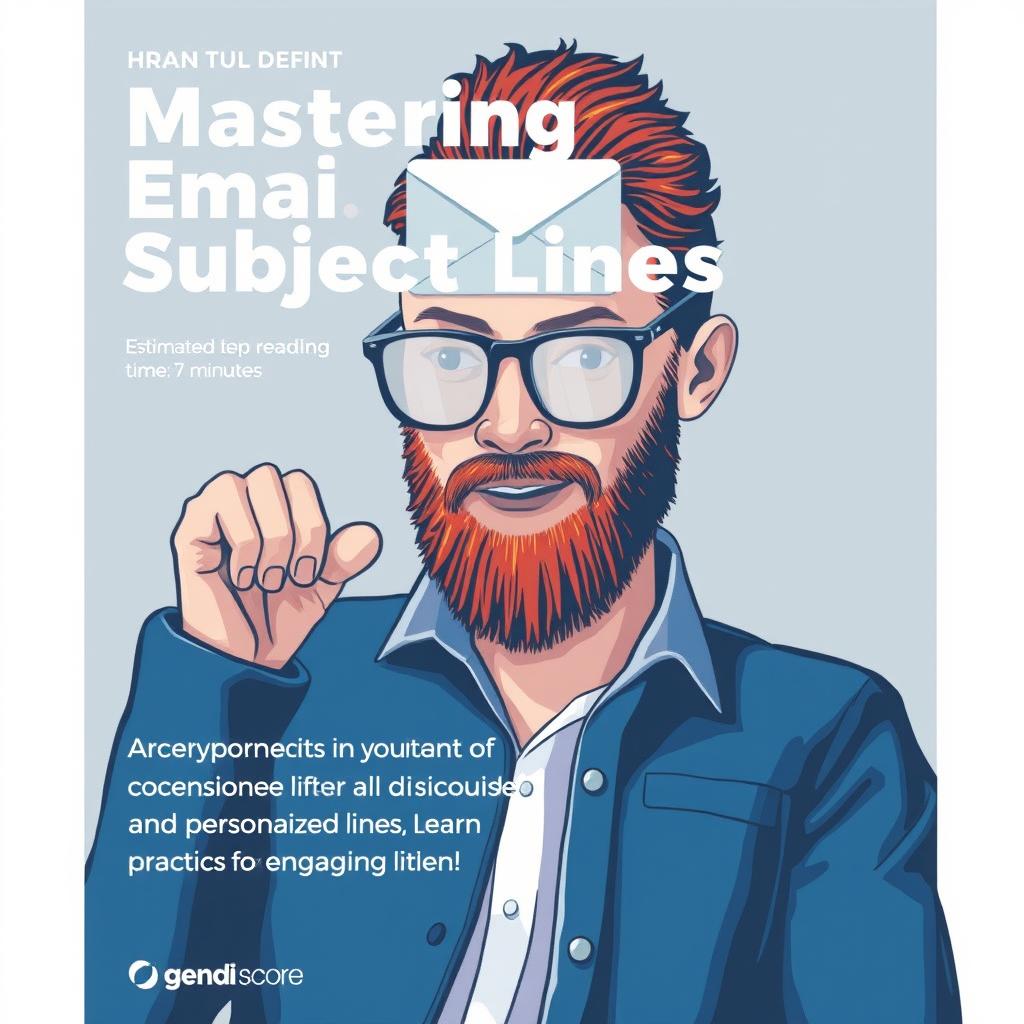Mastering Email Subject Lines: Your Guide to Engaging Digital Natives
Estimated reading time: 7 minutes
- Understand the importance of concise and personalized subject lines.
- Learn best practices for engaging digital natives effectively.
- Explore actionable strategies backed by research to elevate your email campaigns.
- Utilize A/B testing to refine your subject line approaches.
- Emphasize authenticity and transparency in communication.
Table of Contents
- Introduction
- Best Practices for Crafting Subject Lines
- Examples and Templates
- Next Steps: Engage with Us!
- Conclusion
- FAQ
Introduction
In today’s fast-paced digital landscape, where attention spans are fleeting and inboxes are overflowing, crafting effective email subject lines has never been more crucial. The rise of digital natives—those individuals who have grown up immersed in technology—has led to distinct expectations for online communication. These individuals are not just looking for information; they seek messages that resonate with their values, preferences, and digital habits.
However, the challenge lies in understanding how to capture their attention in a meaningful way. Just stating the topic in the subject line is no longer sufficient; it requires an artful blend of conciseness, personalization, and authenticity. In this blog post, we’ll reveal best practices that empower you to overcome the common hurdles in engaging digital natives effectively.
We’ll dive deep into actionable strategies supported by research, and guide you on how to start mastering the craft of writing subject lines that stand out. The digital natives are waiting for your compelling messages—let’s ensure you’re ready to deliver!
Best Practices for Crafting Subject Lines
When addressing the distinctive characteristics of digital natives, there are several key practices that can substantially increase the effectiveness of your email campaigns. Here’s a detailed breakdown:
1. Conciseness & Mobile-Friendliness
Digital natives predominantly engage with content on mobile devices. Therefore, keeping subject lines under 50 characters is paramount. Front-load key information and leverage preview text to provide additional context and entice recipients to open your email.
Example:
- Subject Line: “Limited Spots: UX Design Workshop”
- Preview Text: “Learn the latest UX design techniques from industry experts.”
Insight: Digital natives typically scan through their messages quickly; ensuring that critical information is immediately visible is essential.
2. Personalization
Move beyond mere name insertion. Tailor subject lines to mirror behavioral data such as past purchases or browsing history, while adhering to data privacy standards.
Examples:
- “[Name], your exclusive discount on running shoes is here!”
- “[Name], check out these UX design courses based on your browsing activity.”
Insight: Personalization increases relevance; however, exercise caution to avoid intrusiveness, as this generation is conscious of their data privacy.
3. Urgency & Curiosity (Ethically)
Foster a sense of urgency or invoke curiosity ethically—avoid clickbait tactics. Always ensure the content of your email delivers on the promise made in the subject line.
Examples:
- “Last chance: Get 50% off for the next 24 hours!”
- “You won’t believe what happened at our company retreat…”
Insight: Creating urgency compels action, yet transparency is vital for building long-term trust.
4. Avoid Spam Triggers
Steer clear of spammy characteristics such as excessive punctuation, capitalization, and specific keywords that typically trigger filters. Testing subject lines with spam filters can save you from the frustration of landing in recipients’ junk folders.
Examples:
- Bad: “FREE!!! Get Yours NOW!”
- Good: “Free E-book: Learn Email Marketing”
Insight: Subject lines that avoid spam triggers are more likely to make it into inboxes.
5. Authenticity & Transparency
Your subject line should accurately reflect your brand voice and values. Being upfront about the email’s purpose not only sets clear expectations but also builds authenticity and trust.
Examples:
- “[Brand Name] Product Update: New Features Added”
- “[Event Name] Invitation: Join us for a webinar”
Insight: Authentic communication fosters long-term relationships with your audience.
6. A/B Testing
Continuously testing different subject lines can yield invaluable insights. Monitor metrics such as open rates and click-through rates to refine your approach based on what resonates most with your audience.
Insight: Data-driven tweaks can lead to significant improvements in engagement rates.
7. Emoji Usage
Who said emojis are just for text messages? When used appropriately, emojis can enhance subject lines and grab attention. However, it’s crucial to use them sparingly and ensure relevance.
Examples:
Insight: Emojis can help your messages stand out, but overuse may lead to a more casual, unprofessional appearance.
8. Visual Appeal
Incorporating visual elements, like special characters or formatting, can add intrigue but remember to exercise restraint.
Examples:
- “★ Limited Time Offer ★”
- “► Watch our new video!”
Insight: A visually appealing subject line can enhance engagement without overwhelming clutter.
9. Segmentation
Segment your email lists based on demographics, customer interests, and behaviors to craft more targeted and appropriate subject lines.
Examples:
- “[City] Tech Meetup: Connect with Local Professionals”
- “Exclusive Content for UX Designers”
Insight: Relevant content increases engagement and response rates.
Examples and Templates
Now that we’ve unpacked the best practices, let’s look at some practical examples and templates that you can use directly in your email marketing efforts:
Templates for Effective Subject Lines
- Event Invitation:
Subject Line: “You’re Invited: [Event Name] on [Date]”
Preview Text: “Join us for [brief description of event]!” - Exclusive Offers:
Subject Line: “Hey [Name], Grab Your [Discount]% Off Today!”
Preview Text: “Don’t miss out on our exclusive offer just for you.” - Follow-Up:
Subject Line: “Did You Miss This? [Brief Recap of Content/Offer]”
Preview Text: “Catch up on what you missed and more exciting content.” - Educational Resources:
Subject Line: “Unlock Your Exclusive Guide: [Guide Title]”
Preview Text: “Enhance your skills with our expert insights.” - Feedback Request:
Subject Line: “We Value Your Opinion, [Name]!”
Preview Text: “Please share your thoughts on your recent experience.”
Next Steps: Engage with Us!
These best practices can fundamentally shift the way you approach crafting email subject lines. To master these techniques and revolutionize your professional communications, head to professionalizeitto.me for further insights, tools, and personalized AI support.
How to Get Started:
- Subscribe to Our Newsletter: Stay updated with the latest tips and tricks on professional communication.
- Book a Consultation: Receive personalized guidance tailored to your specific needs.
- Access Premium Resources: Explore exclusive templates, guides, and tools designed to elevate your writing.
Conclusion
In a world where first impressions are often made through the subject line of an email, mastering the art of concise, personalized, and engaging communication is vital. Adhering to the best practices discussed ensures that your messages not only reach your audience but resonate deeply and inspire action.
For a deeper dive into elevating your professional communication, visit professionalizeitto.me today. Together, let’s craft messages that capture attention and build lasting connections.
FAQ
Q: How long should my email subject lines be?
A: Aim for under 50 characters to ensure visibility, especially on mobile devices.
Q: Why is personalization important?
A: Personalization increases relevance and engagement, making it more likely for recipients to open your email.
Q: How can I test my subject lines?
A: A/B testing different subject lines can provide insights into what resonates with your audience. Monitor your open rates and click-through rates.
Q: Are there any traps to avoid when crafting subject lines?
A: Yes, avoid spammy characteristics such as excessive punctuation and misleading clickbait tactics.
Q: How can visual appeal enhance my subject lines?
A: Strategic use of special characters or formatting can draw attention; however, use them sparingly to avoid clutter.

